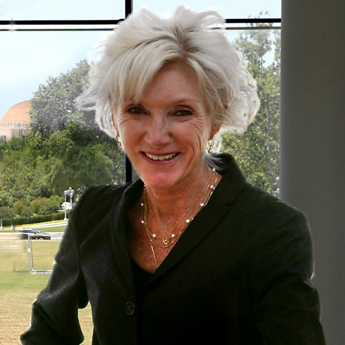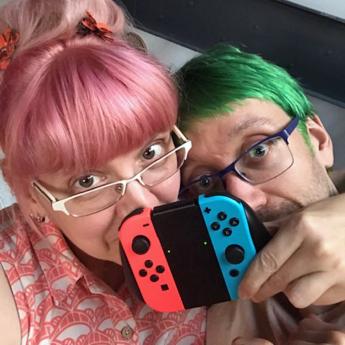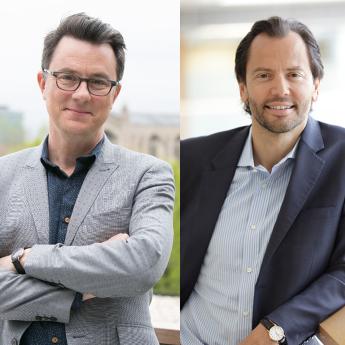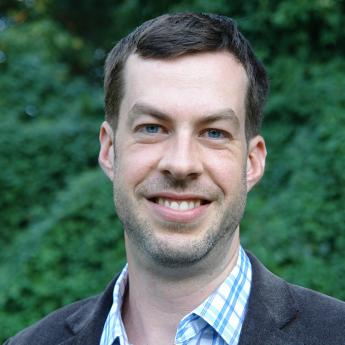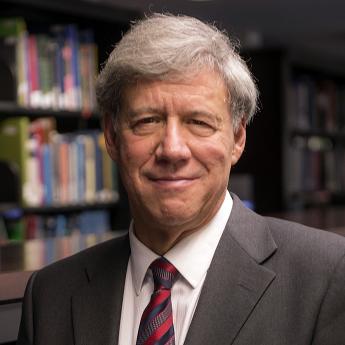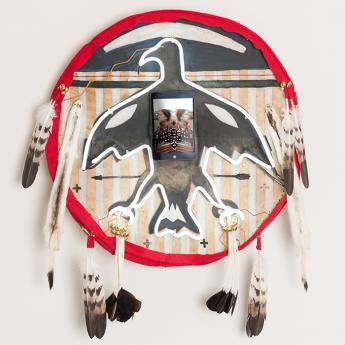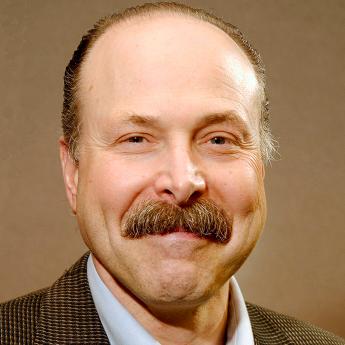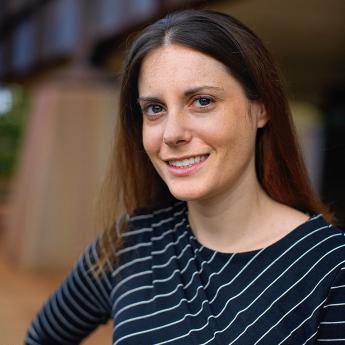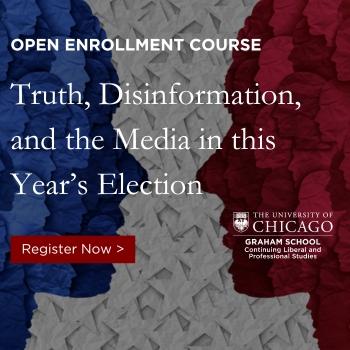Show Notes
Why do we feel empathy for some people, but not others? Where does this feeling of empathy come from? These questions have been the focus of one University of Chicago neurobiologist’s career. And to find answers, Prof. Peggy Mason started studying an unlikely creature: rats.
It turns out that rodents have a lot to teach us about empathy. And the implications of Mason’s work give us important insights into how to tackle some of society’s most difficult problems.
Subscribe to Big Brains on Apple Podcasts, Stitcher and Spotify.
(Episode published March 9, 2020)
Related:
- Helping your fellow rat: Rodents show empathy-driven behavior
- Study finds anti-anxiety drug limits rats’ empathetic behavior
- Social experience leads to empathetic, pro-social behavior in rats
- The Intriguing New Science That Could Change Your Mind About Rats—Wired
- Do animals feel empathy? Inside the decades-long quest for an answer—Vox
Transcript:
Peggy Mason: Individuals not getting along is as epidemic and as serious and as important as is Corona virus or tuberculosis 50 years ago.
Paul Rand: That's Professor Peggy Mason, whose work at the University of Chicago centers around the ideas of empathy and biology.
Peggy Mason: I simply think that this type of work where we understand how individuals interact, and how they will help each other and what makes them not help each other is critical to the world actually getting along. So I think that we need to understand the biology of groups.
Paul Rand: It all started back in 2008 when a graduate student came to Mason with a very specific question.
Peggy Mason: Basically trying to see whether there was a biological basis for empathy. And the way she wanted to look at that was to see whether empathy was present in a rat.
Paul Rand: That's right, a rat. She wanted to find out if rats have empathy.
Peggy Mason: Because rats don't have culture. They don't have Sunday school. They don't have parents telling them to be good or to feel empathy. If they do it, they do it because that's their biology. And that was the simple question.
Paul Rand: And just to be clear, Peggy Mason loves rats. Maybe more than people.
Peggy Mason: Humans talk back. Rodents, much less so much. I mean, rodents, they're terrific. Rats in particular are terrific.
Paul Rand: Mason's research may focus on rats, but her results have real consequences for humans. We've always approached empathy, the thing that makes you feel for other people, from a sociological or psychological point of view. But Mason says, we actually need biology to understand this crucial element of our lives
Peggy Mason: As we try to fix society's ills, and we try to make people care more about each other. That’s one of the disciplines that should be at the table, along with sociology and policy and politics and psychology, should be biology.
Paul Rand: From the University of Chicago. This is Big Brains, a podcast about pioneering research and pivotal breakthroughs that are reshaping our world. Today, Peggy Mason and where empathy comes from. I'm your host, Paul Rand.
Paul Rand: Let me start at a foundational question: what is empathy in the definition that you're working with?
Peggy Mason: So empathy, in the way we define it, it's the communication of affect or emotion between individuals. So, the simplest version of that is something that we call emotional contagion. And this is the communication of some affect such as distress or fear or laughter, you know, humor. We use it all the time to say, oh, I feel empathy for another in distress. But you can also feel empathy when Anderson Cooper starts to giggle
CNN TAPE: (Anderson Cooper giggling)
Peggy Mason: and you start laughing, too. That's also empathy.
CNN TAPE: (Anderson Cooper giggling more)
Paul Rand: That’s probably why he gets to host New Year's Eve all the time, isn't it? He's always giggling.
Peggy Mason: Yeah, he giggles. And he giggles in a very catchy kind of way.
Paul Rand: All right. So tell me about when you first had this idea of exploring empathy and you started doing rats. What kind of experimentation were you doing and what were you looking for?
Peggy Mason: So what we what we're interested to see is: would rats use empathy as a motivation for an action? And the action that we wanted to look for was helping. So, if they saw an individual in distress, would they help that individual if they could?
Paul Rand: This may sound like a simple thing, but the answer could really tell us a lot about where empathy comes from. If a rat helps another rat, it has to be because of their biology. Rats don't have language or ethics or culture to drive them. They just have instincts.
Peggy Mason: So we have this arena that's about one and a half foot square. And in the center of it is a see-through acrylic tube. There's a rat that's inside that tube. That tube has one door. The rat on the inside can't open it. So we put another rat in there and, you know we can't tell the rat to go help him. We can't do anything. He has to teach himself. He has to learn by teaching himself. So if he cares enough, he goes into the center of the arena, which is really not a favorite thing for rodents to do. They like to stick by the sides. And so they go into the center because they're very perturbed by this trapped rat. They nudge the door open and out comes that trap rat.
Paul Rand: So the rat opens the door, even though that means putting itself in a vulnerable position. It makes a deliberate, concerted effort to save its fellow rodent, even if they're stranger.
Peggy Mason: The question is, will they do it again the next day? And in fact, what happens the next day? They do it again and they do it a much faster. So by the end of 12 days of testing, they're doing it, boom, boom, boom, within a minute or two, they open.
Paul Rand: Now, are they doing this because they want to play with the other rat.
Peggy Mason: So that was our first thought. And to test that, I mean, that would be fine, but we needed to test it. What we did was we put two arenas together. The divide between the tube was put up against that divide. So when the trapped rat got out, he got out to a separate arena and they couldn't play together. And what we found was that the rat would open for the trapped rat even if it went to a different arena and it would not open if the tube was empty.
Paul Rand: So these rats really do appear to be fundamentally driven to help each other. They show empathy despite having no personal reward.
Peggy Mason: Essentially, as mammals, we are motivated to alleviate the distress of others. We are motivated by the distress of others to do something that is other oriented. You’re not doing it for yourself in the sense that you're getting out or that you're playing with the other guy. You're doing it for the other. And it does give the helper something. It gives the helper what we call the warm glow of helping. So there's an internal reward. Otherwise they wouldn't do it. But that's what they're getting out of it, nothing external.
Paul Rand: So Mason has her original question answered. There is a biological basis for empathy, but ever the scientists she thinks of another question: will the rats help a stranger, a rat they've never met?
Peggy Mason: And the answer is yes. They help a stranger.
Paul Rand: So then, why?
Peggy Mason: Well, what we realized was that because they're lab rats and they've gone through this genetic bottleneck back in the early twentieth century, they probably seem familiar by smell, by sight, by sound, by feel. And so we took a different type of rat. In this case, a black cape rat. And we introduced the Black Cape rats.
Paul Rand: So here's the question: since white lab rats would have felt familiar to each other, Mason wanted to know if a white rat would save a black rat if it had never seen a black rat before. The answer was no.
Peggy Mason And so what we found was that if an albino rat, a white a albino rat, had lived with a black cape rat, just one, he'd help any black cape rat. But if he had never seen a black Cape Rat before, he would never help black cape rat. So that was really quite amazing. But it suggests that there's this incredible effect of environment. And it really begs the question of whether there's any role for genetics. And that's how we got to what we call the Mogli experiment.
Paul Rand: Mogli as in the Jungle Book?
Peggy Mason: As in the Jungle Book, right
Jungle Book TAPE: So this is a men cub? I’ve never seen one up close before.
Peggy Mason: And so what we did was we took these albino pups on the day they were born and we put them into a litter with black cape rats, and a black caped rat mother, and we grew them up. And when they were weaned, they live with a black cape rat litter mate. So when they were adults, they had never seen another albino rat. And then the question was, would they help? Well, of course, they helped black cape rats because they live with them all their lives. The real question was, would they help an albino rat? And the answer was no.
Paul Rand: Even though they were an albino, rat?
Peggy Mason: Even though they themselves are an albino rat, but they've never seen another albino rat. And they don't get who they are from DNA any more than you and I do.
Paul Rand: This discovery builds even further from her original result. Empathy may come from biology, but it can be shaped by social and environmental influences. But what does all of this tell us about us humans? You and me? For Mason, her mind went immediately to race.
Peggy Mason: Of course. I think it's quite natural to think about types of rats, types of individuals, and think of race, which is one of the great social dividing factors in the U.S. And I think that the lessons that we've learned from the rats are just so wonderful because what they tell us is that we can control this simply by diversifying our environment, that by interacting with others from a different type, you become affiliated towards any of that type.
Paul Rand: Basically, this is more scientific proof that race and racism are not rooted in biology. We can control the environments we create, make systems and societies that work for or against empathy between different groups. To Mason, this is actually optimistic.
Peggy Mason: That's a really wonderful message and we can get a lot farther if we simply understand that diversity in exposure in interaction is critically important. Now, one of the things that we're interested in doing more long term is to try and figure out how do the rats categorize? What does it take to motivate them to accept another type and what sensory inputs are critical for that. Obviously with an aim to try and take some lessons from the rats to use them to increase human’s acceptance of different types than they have been exposed to. And there's something called minimal groups. And so essentially, if you give a bunch of people red bands and blue bands, and you say, you're on the red team and they’re on the blue team, and you're the red team and red, red, red. You can make those red teams very diverse and they will be first for each other. No matter what other diversity is. So you can change the axis upon which people will affiliate. It's plastic as hell.
Paul Rand: This discovery has powerful implications for the human world. But Mason's work is not over yet. There's more after the break.
(Break)
Paul Rand: Mason’s rats have given us incredible insights into when, why and how we may feel empathy for one another. But they may also have something to tell us about a long-held social science theory you may have heard of. It's called the bystander effect, and it's a theory that was sparked by the story of one woman.
Peggy Mason: Catherine Genovese. Often called Kitty Genovese. And she was raped and murdered in Kew Gardens on a hot summer night.
CNN TAPE: In a front page story, The New York Times reported that thirty seven witnesses either saw or heard the attack, the headline said they saw it, and not one lifted a finger.
Inside Edition TAPE: Her story is taught in psychology classes and her name is synonymous with people who look the other way when trouble happens.
Peggy Mason: That story is now known to be non-factual on many levels.
PBS TAPE: The Times also corrected its reporting to say that, quote, the portrayal of 38 witnesses as fully aware and unresponsive was erroneous.
Peggy Mason: Nonetheless, that story motivated Bibb Latane and John Darly to investigate why an individual would be less likely to help when they're in a group than when they're alone. And that is a very consistent finding if a person is tested with what are called Confederates.
Paul Rand: Confederates are people in research experiments who seem to be regular participants but are actually part of the experiment. So in this case, what they'll do is…
Peggy Mason: Deliberately not help. And being with a Confederate changes their behavior from what they would do when they're alone. So, for example, a person is called into a room, they have to fill out a questionnaire, which is a distractor task. As they're sitting there, smoke comes in from one of the vents. If they're being tested alone, they leave the room and tell somebody this at around a 75 percent rate. If they are in there with one or two confederates that don't help, that rate goes down to 13 percent. That's the effect of having two individuals who are not helping. Why should it change? But it does change. And, more recently, some people have looked at this using the cameras that are everywhere in modern life to see whether individuals on the street help in violent encounters. The answer is yes. The further answer is that for every extra individual that is present, the amount of helping goes up by a factor of 1. In other words, having a Confederate there suppresses helping, having or a non-confederate, a naive person, if you will, does not decrease it. Suffice it to say that we've managed to recapitulate this entire effect with rats, which tells you that that this is, again, a biological thing. So the common explanation for the bystander effect is there's a lot of hand-wringing about the dissolution of society. We don't care about each other and something called diffusion of responsibility. And our data are pretty clear. If the rats show it, then it's very unlikely to be diffusion of responsibility.
Paul Rand: If you were given an unlimited amount of resources and the question was, I want to figure out the challenges that we feel our world stressed by, and I want to look at this behavior to try to find some answers that could actually benefit humans and society in a larger scale. Where would you put your experiments and what would you be trying to figure out?
Peggy Mason: I want to know what it is about being exposed to another type of individual that makes somebody accept all those individuals. So what I know today is that if I house an albino rat with a black cape rat for two weeks, then they'll help any black cape rat. What is that based on? And how can I make it happen faster? How we can make it happen faster was an experiment we did this past summer, not published, so I'm not going to go into too much detail, but that's a very.
Paul Rand: Do you feel like you found an answer?
Peggy Mason: Oh, yeah.
Paul Rand: You did?
Peggy Mason: Food is involved. Food is involved.
Paul Rand: So like, if we had Big Macs for everybody it would all be fine.
Peggy Mason: Have you ever seen the play, Oslo.
Paul Rand: Yes.
Peggy Mason: It's very Oslo. When did things actually work? When they were at the table having those delicious—What were they—dumplings, muffins, something or other that the cook made.
Paul Rand: Yep.
Peggy Mason: Right now we’re in conversation with a couple of Israeli scientists to try and replicate this in humans. To try and test what we've done in the rats in humans. So, if anybody wants to fund that, get in touch.
Paul Rand: How often, when you get asked, are people trying to figure out how to take your work and your insights and apply them to some of the problem involving policy and other things?
Peggy Mason: I wish they were
Paul Rand: Okay, not so much?
Peggy Mason: Not that I'm aware of.
Paul Rand: What would help then? Because it feels like it, and maybe this is the next round of experiments that you're getting at, maybe we're gonna find communal tables set up around the world? What would it take for people to realize that because there's so much work going into policy. What do you hope? What if you had to sit down, say, listen, I wish you guys would pay attention to this because it would really make a difference as you're setting different kind of policies?
Peggy Mason: Yeah, I think that we need to think about the geographic isolation that we have made of people of different identities. And that is really going to it's going to bias their result, you know, for their entire life. And so somehow we've got to get more mixing in.
Paul Rand: We'll have to wait to see exactly what Mason finds with her next round of experiments. But in terms of the question of empathy and biology, it seems like Mason's finally got her answer.
Peggy Mason: What I'm left with is here we are, we've diverged from rodents 65, 70 million years ago and they're helping other individuals in distress. And we do, too, but sometimes we don't. And I think that the bottom line is that when we are helping another in distress, we are acting out our biological inheritance. And when we don't, we're actually actively suppressing it. It makes me think of that saying that you say at Passover Seder every year, which is, and pharaoh hardens his heart. You have to actively not let yourself help. And I think that many of us who live in cities at least have this experience when we pass somebody who's asking for money. You want to help. You have to kind of gird yourself not to help. As mammals, we want to help. And of course, we can't help everybody or we'd never get home. We'd have no money. But it takes an effort not to help. And so I think that these experiments really tell us that as we try to fix society's ills and we try to make people care more about each other, that one of the disciplines that should be at the table, along with sociology and policy and politics and psychology should be biology.
Episode List
Unraveling the Mystery of Life’s Origins on Earth, with Jack Szostak (Ep. 61)
Harvard geneticist and Nobel laureate explores how we got here—and whether we’re alone in the universe
The Urgent Need to Reinvest in American Research, with Barbara Snyder (Ep. 60)
AAU president discusses how more federal funding can secure American innovation
How Alternate Reality Games Are Changing The Real World with Patrick Jagoda and Kristen Schilt (Ep. 59)
UChicago scholars design ARGs to address issues ranging from climate change to public health
What Remains Unanswered After The 2020 Election, with William Howell and Luigi Zingales (Ep. 58)
UChicago economist and political scientist discuss the polls, what lies ahead for Biden and the country post-Trump
When Governments Share Their Secrets—And When They Don't, with Austin Carson (Ep. 57)
Scholar discusses the political theater of foreign policy—and the case for declassifying intelligence
How We Can Fix a Fractured Supreme Court, with Geoffrey Stone (Ep. 56)
Legal scholar examines how nomination of Amy Coney Barrett could tip an increasingly politicized bench
Correcting History: Native Americans Tell Their Own Stories (Ep. 55)
How scholars helped a Chicago museum rethink its representation of Indigenous peoples
The Future of Voting And The 2020 Election, with Assoc. Prof. Anthony Fowler (Ep. 54)
A leading political scholar discusses voting by mail, mobile voting and why he thinks it should be illegal not to vote.
Why The Quantum Internet Could Change Everything, with David Awschalom (Ep. 53)
A world-renowned scientist explores quantum technology and why the future of quantum may be in Chicago
The Way You Talk—And What It Says About You, with Prof. Katherine Kinzler (Ep. 52)
A leading psychologist explains how speech creates and deepens social biases



